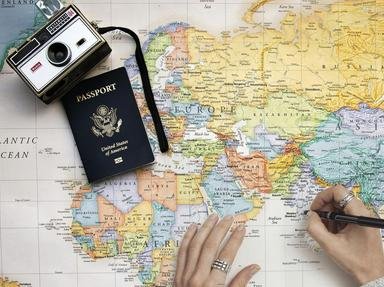Quiz Answer Key and Fun Facts
1. Bob's journey begins in one of the most unique cities of the world, which along with being the largest city in Turkey is also the only city to lie on two continents, Europe and Asia. Which of the following is NOT one of the names by which the city has been known over the ages?
2. Continuing on his journey, Bob reaches Aleppo - the third largest city of the former Ottoman Empire and one of the oldest continuously inhabited cities of the world. Which west Asian country is Bob in?
3. After a brief stay, Bob makes his way to the next city on his list - Baghdad. Though ravaged by war in recent times, the city still retained some of its historic monuments. Which country did Bob reach?
4. At his next stop, Bob is amazed to find a city seemingly untouched by the passage of time. Located in the foothills of the Alvand Mountain, Hamadan has a history dating back to the 11th century BC when it was occupied by the Assyrians. Which Asian country, formerly known as Persia, is this city found in?
5. Samarkhand, the ancient Persian city that was captured by Alexander the Great in 329 BC, has at various times been ruled by the Turks, Arabs, Mongols and Russians. In which doubly landlocked central Asian country is this city located?
6. Which city that was formerly the capital of Kazakhstan was named after the apples that grow abundantly in the regions surrounding it?
7. Bob's next stop is the largest city in the Hazarajat region of central Afghanistan and the capital of the province of the same name. Eager to see the large Buddha statues carved into the cliffs of this ancient Buddhist site, Bob was disappointed to hear that the statues were destroyed by the Taliban in 2001. Which city has Bob reached?
8. Crossing the historic Khyber Pass, Bob finds himself in the country of Pakistan. Which Pakistani city, nicknamed the "Frontier City", is located at the eastern end of the Khyber Pass?
9. Bob finally reaches the eastern terminus of this famous trade route. Which Chinese city, known as one of the Four Great Ancient Capitals of China and home to the Terracotta Army, is Bob in?
10. The cities in Q1-9 all lie along a famous trade route connecting Europe and East Asia, which was named after the main commodity traded along this path. What was it called?
Source: Author
zorba_scank
This quiz was reviewed by FunTrivia editor
Pagiedamon before going online.
Any errors found in FunTrivia content are routinely corrected through our feedback system.

